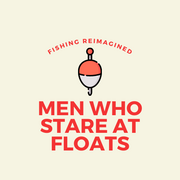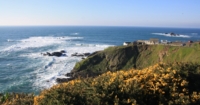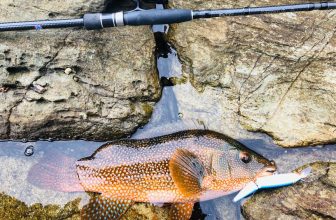If you’re looking for a seriously fun, accessible and budget-friendly sea fishing option, you’ve found it. Light rock fishing may be the most under-utilised fishing method in the British Isles. Nothing has done more for the size isn’t everything market than LRF.
Originating in Japan, LRF fishing began gaining popularity in the UK when a group of bass fishing guides from Jersey wanted some winter fishing options when bassing dies off in the winter months as the fish went out to spawn in warmer waters.
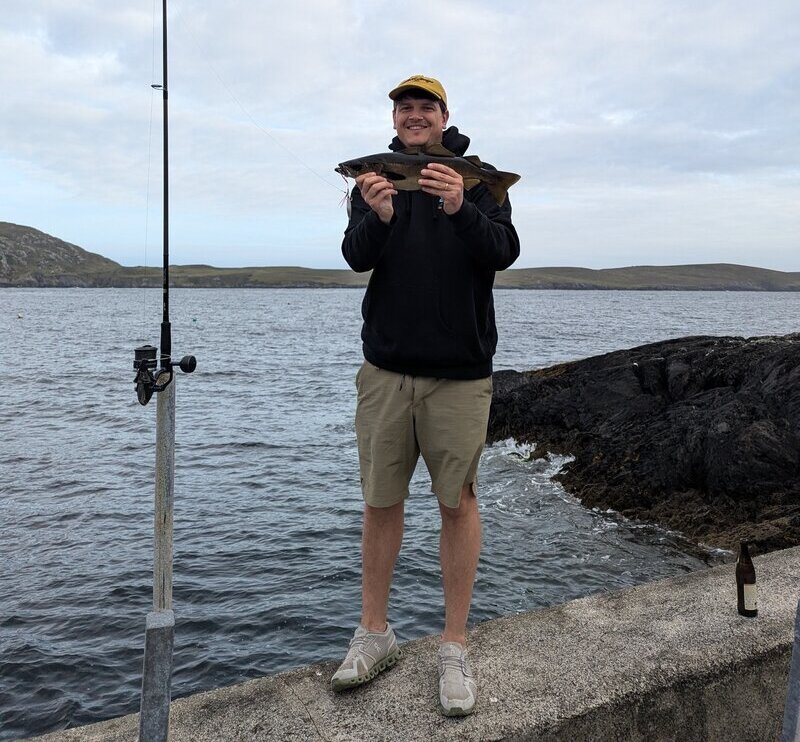
It started to gain popularity in the early 2000s as specialised tackle and technical knowledge became more widely available. It is a fantastic way of targeting smaller species from the shore without sacrificing the ‘sport’ angle. For anyone looking to get into sea fishing, LRF is an accessible, budget-friendly starting point.
What’s on this page?
What is LRF fishing?
LRF (or Light Rock Fishing) is a fishing technique that utilises lightweight tackle to target smaller fish species from the shore. The combination of short, fast action rods, 1-10g lures and ultra-thin lines makes for some superb sport fishing.
You might think ‘Oh, it’s a method of fishing designed to target small species.’ True, but it’s so much more. Some more than reasonable fish have been caught on LRF tackle and the diversity of species and fight on light gear
Pros and cons of LRF fishing
- Accessibility
- Cost
- Safety
- Multi-species fishing
- Suitable for fishing all year round
- Minimal gear required
- Fish size
- Snags and line breaks
- Lost tackle
Where can I go LRF fishing in the UK?
You can go LRF fishing anywhere in the UK where you can find predatory fish like wrasse, bass and pollock on lures from the shore. Typically man-made structures like piers and harbours have some excellent marks, as do estuaries and coastal path areas on England’s southwest coast.
As with most sea fishing from the shore, you’ll have more life in areas rich in life and structure. So look for rocky, kelp-rich areas where fish can hide in wait. Almost the entirety of the southwest coast, estuary-led areas like Christchurch in Sussex and Pembrokeshire are fantastic places to start.
Some good starting points
- Christchurch Harbour, West Sussex
- St. Ives, Cornwall
- Lowestoft Harbour and Pier, Suffolk
- Whitstable Harbour, Kent
- Prawle, Devon
- Amlwch Harbour, Anglesey (Wales)
- Newton Haven, Northumberland
- East Pier, Whitby (Yorkshire)
- West Bay, Chesil Beach (Dorset)
The 11 Best Spots to Sea Fish in Cornwall
What type of fish can I catch LRF fishing in the UK?
When LRF fishing in the UK, you can target;
- Wrasse
- Bass
- Pollock
- Mackerel
- Gurnard
- Rockling
- Garfish
- Coalfish
- Flatfish
- Pouting
- Rockling
In our opinion, wrasse are the most exciting species to catch on an LRF setup. Pound for pound, they are one of the most exciting fish in UK waters and can be particularly aggressive. Perfect for light tackle. tend to Inhabitat holes and crevasses near manmade structures like piers and breakwaters not far from the shore, they are usually our target species.
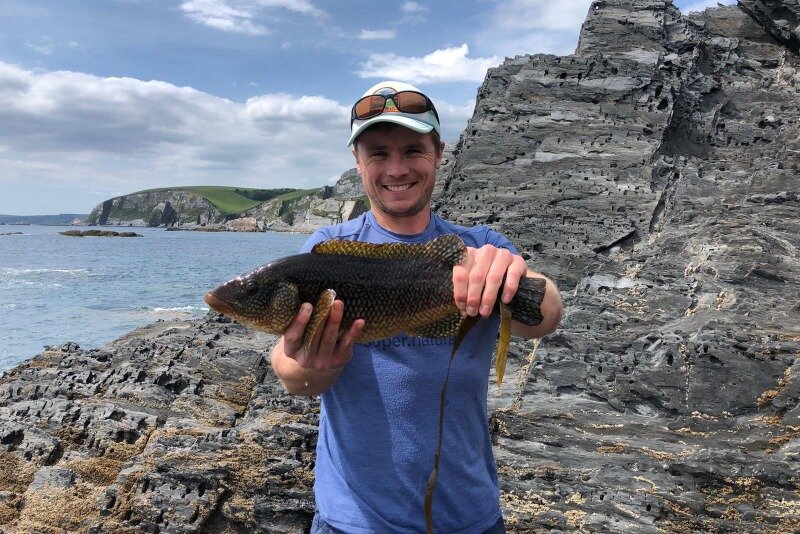
As arguably the most prized fish in UK waters, bass are fantastic fighting fish and another superb target species. You’re more reliant on luck and/or knowledge of the bass’s feeding habits when compared to less transient fish like wrasse or pollock. Another superb fighting fish on LRF tackle.
If you’re on very light tackle, there are nursery grounds in harbours and bays all over the UK. So with a little knowledge of the water and some seriously light tackle, you can make fish up to a 1lb feel much, much bigger.
LRF fishing setup
You don’t need much to start LRF fishing. As a starting point, we’d recommend;
- A lightweight, fast action rod with 1-10g casting weight
- A 500-2500 size reel
- A selection of micro lures and jigs up to 10g in weight
- Up to 6lb braid and fluorocarbon
LRF fishing rods
You’re looking for something lightweight, fast action and with a solid, sensitive tip. Typically solid tips are a better option than tubular ones for LRF fishing. You could also consider a telescopic rod if you want something ultra-handy.
| Feature | Specifications |
|---|---|
| Casting weight | Up to 10g |
| Length | Up to 7’6″ |
| Action | Fast action |
| Tip style | Solid tip |
LRF fishing reels
We’d suggest a 1500-size reel as a good starting point. Big enough to be multi-purpose, should the freshwater wind take you.
| Feature | Specifications |
|---|---|
| Size | Up to 2500 |
| Line capacity | 100-150m (braid) |
| Spool type | Shallow |
LRF fishing lures
Mico-jigs, small soft plastics and metals in the 1-10g range would keep you well stocked. Remember to have a range of colours and actions.
| Feature | Specifications |
|---|---|
| Weight | 1-12g |
| Length | 1″-3″ |
| Types | Micro jigs, small metals, soft plastic and small plugs |
LRF fishing line
A lightweight braid and fluorocarbon leader are all you need. Somewhere in the 2-6lb range should do everything you need.
| Feature | Specifications |
|---|---|
| Type | Braid (fluorocarbon leader) |
| Diameter | Thin |
| Strength | 2-6lb |
What’s the best time of year to go LRF fishing?
LRF fishing in the UK was originally used as a way to supplement bass fishing in the winter months when the bass head out to deeper, warmer water. But the warmer summer months are by and large a much better time to do some LRF fishing for many reasons. Species diversity, aggression, accessibility etc.
Anytime between June – September is probably optimal for LRF fishing. But the months on either side of that can be equally productive and if you’re desperate for some cold-weather fishing, LRF is a great option in the winter months.
FAQs
You can still catch small fish on LRF gear and bait instead of lures. But true LRF fishing is designed to target small, predatory fish from the shore on lures and jigs. Not bait. But nothing wrong with experimenting with some live prawn, crab or cut up fish if the fish aren’t biting.
Typically the 1-10g lures you purchase for LRF fishing should come equipped with an appropriately sized hook. We’d recommend a maximum of a size eight hook if you decide to change things.
Tags: LRF Fishing
Hi, I'm Harry. A keen, albeit exceedingly average fisherman. I've spent the last few years trawling London's waterways with - if I'm being kind - varied success and would love to help you avoid the mistakes I have made.
